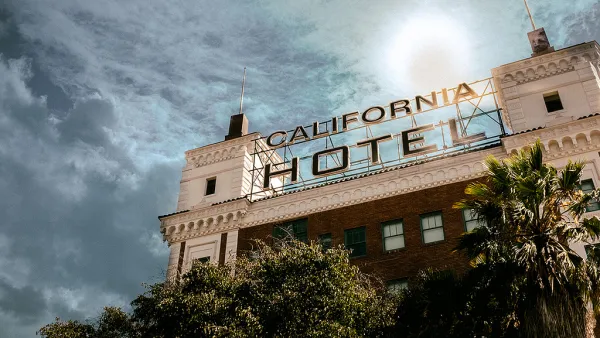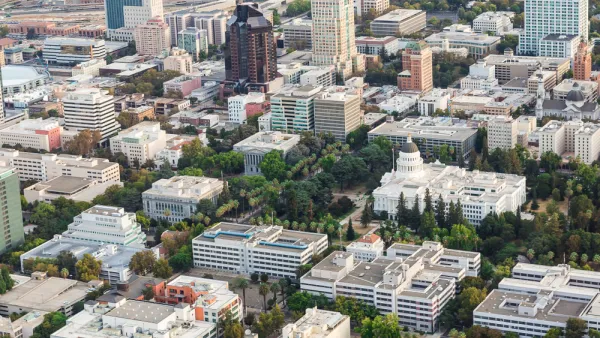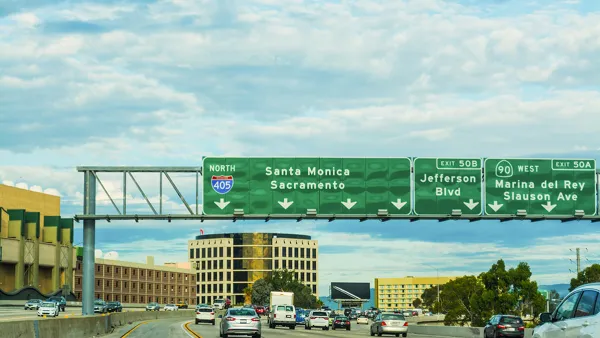The 0.77 percent growth rate comes mostly from increased births, reports the California Department of Finance. The Census Bureau estimated the population increase at 20 percent less for the same time period: July 1, 2016 to July 1, 2017.
While net domestic migration, a measure of residents moving to California from other states minus those leaving for other states, remained negative, as it has since 2000, the number was lower than in 2016. "The net number of people who left for other states dropped from 164,000 in 2016 to 105,000 this year," reports Melody Gutierrez for the San Francisco Chronicle on Dec. 21. Only Riverside County, the fourth most populous county in the state after Los Angeles, San Diego, and Riverside, had positive domestic migration.
Net migration, on the other hand, which includes movement to and from abroad as well as domestically, added 80,000 people, accounting tor 27 percent of the state's population growth, with the remainder coming from natural increase, i.e., births minus deaths.
Residents leaving the Bay Area have been getting wealthier due in part to the region's exorbitant housing market, which also discourages lower-income people from moving to the nine-county region.
The fastest growing counties were inland, in the Central Valley or Inland Empire, according to to the California Department of Finance new release [pdf] on Dec. 21. The department is mandated by the state constitution to obtain the demographic data.
Placer, Stanislaus, Merced, San Joaquin, and Riverside counties had the largest percentage increases in population, each growing by 1.28 percent or more
The increase in population was greater than last year's addition of 295,000 people, a .75 percent increase.
The birth rate dropped to 12.3 births per 1,000 population, the fourth lowest since data collection began in 1905, from 12.42 births per 1,000 last year and 13.8 births per 1,000 population in 2010.
Conflicting data from Census Bureau
The U.S. Census Bureau released population data a day earlier, Dec. 20, highlighting Idaho as the nation's fastest growing state at 2.2 percent.
According to the Census report, the Golden State gained 240,177 from July 1, 2016 to July 1, 2017, or 60,823 fewer people than the state estimate, amounting to a 0.61 percent growth rate. Considering the nation as a whole grew by an average of 0.72 percent last year, adding 2.3 million people, it's important to use the Census data, not state data when comparing California to the rest of the country. The current population of the U.S. is about 326.5 million.
While California is the most populous state, 39.53 million people on July 1 according to the Census (70,000 higher than state's figure), both Texas and Florida, the nation's second and third most populous states, added significantly more residents last year, with 399,734 and 327,811, respectively.
FULL STORY: Politics California’s population: 20 million in 1970, nearly 40 million now

Analysis: Cybertruck Fatality Rate Far Exceeds That of Ford Pinto
The Tesla Cybertruck was recalled seven times last year.

National Parks Layoffs Will Cause Communities to Lose Billions
Thousands of essential park workers were laid off this week, just before the busy spring break season.

Retro-silient?: America’s First “Eco-burb,” The Woodlands Turns 50
A master-planned community north of Houston offers lessons on green infrastructure and resilient design, but falls short of its founder’s lofty affordability and walkability goals.

Test News Post 1
This is a summary

Analysis: Cybertruck Fatality Rate Far Exceeds That of Ford Pinto
The Tesla Cybertruck was recalled seven times last year.

Test News Headline 46
Test for the image on the front page.
Urban Design for Planners 1: Software Tools
This six-course series explores essential urban design concepts using open source software and equips planners with the tools they need to participate fully in the urban design process.
Planning for Universal Design
Learn the tools for implementing Universal Design in planning regulations.
EMC Planning Group, Inc.
Planetizen
Planetizen
Mpact (formerly Rail~Volution)
Great Falls Development Authority, Inc.
HUDs Office of Policy Development and Research
NYU Wagner Graduate School of Public Service




























